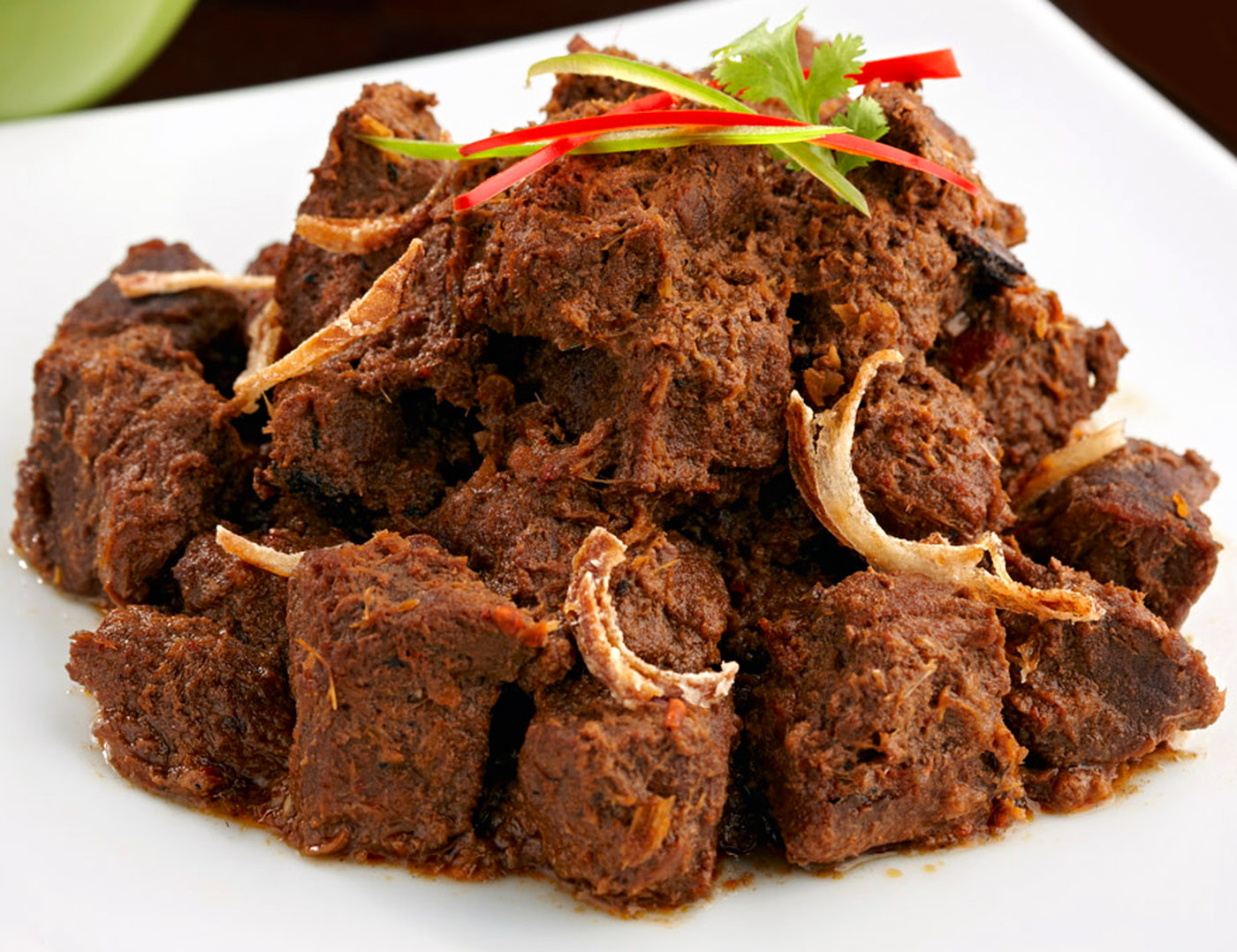
Food of
Nusantara also called the Indonesian cuisine. Indonesian cuisine is one of the richest culinary traditions in the world, and filled with
a strong flavor. The wealth of the dish is a reflection of cultural diversity
and traditions of the archipelago which consists of approximately 6,000
inhabited islands,
and occupies an important role in the national culture of Indonesia in general. Almost all Indonesian dishes rich with spices derived from spices such as pecans, chili, key retrieval, galangal, ginger, kencur, turmeric, coconut and palm sugar followed by the use of the techniques of cooking according to the material, and indigenous tradition there is also the effect of through such trade originating from India, China, Middle East, and Europe.
and occupies an important role in the national culture of Indonesia in general. Almost all Indonesian dishes rich with spices derived from spices such as pecans, chili, key retrieval, galangal, ginger, kencur, turmeric, coconut and palm sugar followed by the use of the techniques of cooking according to the material, and indigenous tradition there is also the effect of through such trade originating from India, China, Middle East, and Europe.
Basically there is not one singular "Indonesian cuisine", but rather,
the diversity of regional cuisine is influenced locally by the Indonesian
culture and foreign influences. For example, rice is processed into white rice,
or rice cake rhombus (steamed rice) as a staple food for the majority of
Indonesia's population, but to the east is more commonly consumed sago, corn,
cassava, and sweet potatoes. Most common form of presentation of Indonesian
food consists of staple foods with side dishes of meat, fish or vegetable side
dishes.
Throughout its history, Indonesia has been involved in world trade due to its
location, and its natural resources. Cooking techniques, and developing
authentic Indonesian food ingredients, and then influenced by the culinary arts
of India, the Middle East, China, and eventually Europe. Spanish and Portuguese
traders brought a variety of foodstuffs from the American continent long before
the Dutch seized Indonesia. Maluku islands are renowned as the "Spice
Islands", also donated spice plants native to Indonesia to the world of
culinary arts. Culinary arts eastern Indonesia region similar to the art of cooking
Polynesia and Melanesia.
Cuisine Sumatra, for example, often showing the influence of the Middle East,
and India, such as the use of curry spices in meat dishes, and vegetables,
while Javanese cuisine evolved from the original cooking techniques
archipelago. Cultural elements of Chinese cuisine can be observed in some
Indonesian dishes. Dishes such as noodles, meatballs and spring rolls had been
absorbed in the art of Indonesian cuisine.
Several types of native Indonesian dishes also can now be found in several
countries in Asia. Indonesian dishes such as satay, rendang and sambal also
popular in Malaysia and Singapore. Ingredients of soy-based foods such as tofu
and tempeh variations, are also very popular. Tempe is regarded as the original
discovery of Java, local adaptation of fermented soybeans. Other types of
fermented soybean meal is oncom, similar to tempeh but using different types of
fungus, oncom very popular in West Java.
Indonesian food generally eaten by using a combination of cutlery spoon on the
right hand and the fork in the left hand, though in many places (such as West
Java and West Sumatra) also commonly found eating directly with bare hands.
In the restaurant or certain household prevalent use your hands to eat, such as
seafood restaurant, a traditional restaurant Sunda and Padang, or stall tent
pecel catfish and fried chicken typical East Java. A place like this usually
also serves finger bowl, a bowl of tap water with lemon slices in order to
provide a fresh scent. The water bowl should not be drunk; only used to wash
hands before and after meals using their bare hands.
Using chopsticks to eat prevalent in restaurants serving Chinese cuisine which
has been adapted into Indonesian dishes such as chicken noodle or noodles with
dumplings, fried noodles and fried Shahe fen





0 komentar: